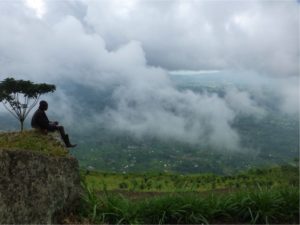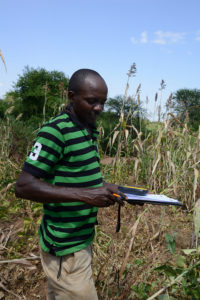
Restoration has never been more important, with almost a third of the world’s land surface degraded. But what exactly is restoration? And how do we know if it works?
More than 1.5 billion of the world’s poorest people are directly affected by degraded land. The Bonn Challenge aims to have 350 million hectares restored by 2030. Private- and public-sector land managers have already promised almost half that amount. This is very encouraging but how will we even know whether the Bonn Challenge was a success? In other words: what do we mean by restoration?
One common notion is that land restoration returns an ecosystem to some previous, ideal state. Yet it is typical for degraded land to be inhabited by people, who are often among the world’s poorest and most vulnerable. Restoration has the potential to improve their livelihoods if, indeed, restoration outcomes respond to local needs. But returning to a previous state (whichever state that is) is often not feasible nor desirable. So, if restoration is to succeed in some form, it is imperative to set specific goals together with the people living on the land. Most importantly, what aspects of the functionality of the land are to be restored?
Another common notion of land restoration is that it is done through planting trees. But do we know if land is always in better shape with more trees? And what aspects of the functionality of the land can be restored with trees? Does it matter which trees?
A newly published paper, Trait-based approaches for guiding the restoration of degraded agricultural landscapes in East Africa, addresses these questions. The paper is published in a special feature, Functional Traits in Agroecology, in the Journal of Applied Ecology.

The study
Researchers from the World Agroforestry Centre (ICRAF) studied degraded agricultural landscapes in Kenya, Ethiopia and Uganda. Farmers suffered the consequences of degradation through declining soil fertility and crop productivity. The researchers focused on soil functions to quantify the extent to which land was degraded or restored. Instead of conducting field experiments, they looked at the variation present in the landscapes and tested whether the variation in soil functionality could be explained by vegetation cover, the number of trees, and by the traits of the trees. The study was observational and reflected the variation in real land-use practices and restoration measures actually being applied.
The researchers not only looked at the number of trees but also their size and traits to assess their impact on key ecosystem functions. This way, trees with certain traits, for instance, high wood density, could be seen to increase a certain function, such as carbon stock, more effectively than trees with low wood density. This would then give clear guidance for land-restoration planners: if the goal was to restore carbon stock then promote the use of high wood density trees.
Results
The researchers found that in the degraded agricultural landscapes, trees were associated with more productive soils. But more important than the number of trees was the non-woody vegetation cover. With higher vegetation cover, the soil was more fertile (had higher organic carbon) and less erosion took place. In addition, the diversity of functional traits of the trees on the land was shown to enhance soil fertility; invasive species tended to increase erosion.
The results had clear implications for restoration of soil health: avoid bare ground, plant trees, prioritize the removal of invasive species and promote diversity of trees on farms. Such evidence for restoring specific ecosystem functions is urgently needed.
The study also illustrated that evidence for restoration can be found through systematic assessment of vegetation, similar to an approach common in functional ecology. Applying a trait-based approach to existing projects on land-health monitoring would allow the study of complex processes more mechanistically and would eventually generate more impact on the ground. Integrating the approach into new and existing projects would be feasible for three reasons: 1) the growing body of evidence on which traits promote which functions; 2) the large amount of freely available trait-data online; and 3) the fact that many traits are easy to measure.
Read more: Second-growth forests: a boon for land restoration and climate change mitigation
By Madelon Lohbeck, ICRAF Scientist.
Reposted with permission from The Applied Ecologist’s Blog.
This research forms part of the CGIAR Research Program on Forests, Trees and Agroforestry, which is supported by CGIAR Fund Donors.











